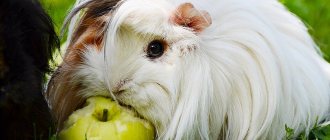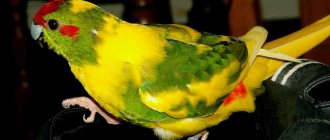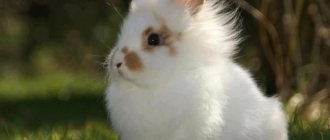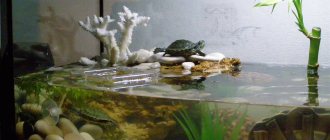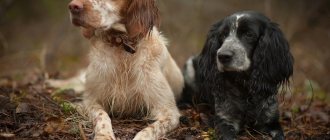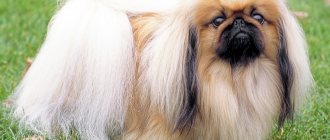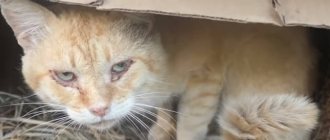Skinny is a guinea pig without hair. On the one hand, the absence of hair is a plus, since there is no need to comb it and clean clothes and furniture of hairs. On the other hand, a hairless rodent needs increased care - it does not tolerate temperature changes well, and its skin can get sunburned.
Let's find out what else is remarkable about this species and how to properly care for this unusual pet.
History of the breed
Hairless guinea pigs appeared in 1978 as a result of a genetic mutation. Canadian scientists from the Armand Frappier Institute in Montreal, while breeding the Hartley breed, accidentally received pigs whose hair fell out as adults. The animals turned out to be very funny. It was decided to breed a hairless breed.
At the very beginning, skinnies were bred for a specific purpose. Hairless pigs have been used for dermatological research. Later, these animals aroused interest among breeders as pets.
The first hairless pigs could not live long due to a weak immune system. It took breeders almost 4 years for the bald variety to gain the right to exist. They crossed these animals with representatives of the Self breed to improve their health.
Interesting fact. The first skinny pigs had white skin and red eyes. Thanks to the efforts of scientists, a wide variety of colors later appeared - monochromatic and combining several colors.
Longevity depending on breed
There are up to 50 breeds of pigs, which are distinguished by the size, color and structure of their coat (there are already pigs that are completely devoid of hair). Sometimes breed affects an animal's lifespan.
Hairless Skinny and Baldwin live from 5 to 8 years, the period that is considered normal for other pigs is limited for them. At first they lived much less. Completely devoid of hair, the pigs had weak immunity, easily caught colds and died.
Careful care is required for a pig of any breed so that it remains cheerful and active.
But the work of breeders was not in vain; today, hairless representatives of pigs live quite a long time if the conditions are met. The main condition is a constant air temperature without drafts and changes from 22 to 24 degrees.
Very peculiar Abyssinian guinea pigs, which are called rosette pigs because of their peculiar hair growth, live up to 6 years . In some areas, the fur grows in rosettes; the more of them, the higher the value of the pig. They are very difficult to breed; requirements are imposed even on the number of areas with “sockets”.
These animals are very human-oriented. If you can’t spend a lot of time with them, you should definitely keep at least a couple of pigs so that they don’t get bored. Stress, long periods of feeding, and temperature changes can accelerate the death of a pet.
Smooth-haired guinea pigs live on average up to 8 years. They can be very large, with colors ranging from a mixture of dark and milky white, typical of Siamese cats, brindle, spotted (Dalmatians) to plain cream, brown, black and white.
Royal Rex guinea pigs live on average 7 years. They are probably the most unusual of rodents: wire-haired, with curls, hair length up to 2 cm. The hair does not fit tightly to the body, it seems that Reksiks are dressed in astrakhan fur coats.
Long-haired breeds live up to 7-8 years, sometimes longer than others. This is probably due to more careful care. The coat, which goes down like a mantle to the surface, is shiny, slightly wavy, makes the pig look like a Pekingese, they are often given haircuts and hairstyles, tied with bows, decorated with hairpins with rhinestones, combing and bathing almost every day, carefully rubbing in vitamin ointments to preserve the beauty of the hair cover, calculating the diet so that unusual animals have enough vitamins and minerals.
A good appetite, examinations by veterinarians, constant communication with the owners and walks around the apartment, running through a maze or on a wheel, swings - all this will help the pig keep fit and stay in good shape for many years.
Description
The skinny guinea pig is quite large. Its body length is 30-34 cm. A guinea pig weighs about 1 kg (females are slightly smaller). The height at the withers of a mature individual is 6-7 cm.
Unlike Baldwin pigs, skinnies are born completely hairless. As they grow older, sparse fur 0.3-1 cm long appears on the face and neck. Externally, the pets look like small hippos.
Exterior Features:
- skinny pigs – owners of a dense physique;
- the head is large, but looks neat;
- large eyes, expressive gaze;
- the iris is reddish, brown or black;
- large ears are rounded and hang down, but do not touch the head;
- curved nose;
- the neck is short, dense;
- a well-built torso with a well-developed muscle corset is shaped like a barrel;
- there are folds of skin in the back, neck and around the limbs;
- paws are short, with mobile small toes.
A hairless guinea pig may have different skin pigmentation, which determines its color. The most common are chocolate, white, cinnamon. There are also pets with a spotted pattern on the body that combines 2 or 3 colors.
Baldwin appearance
Baldwin is smaller than skinny. The length of an adult does not exceed 25 cm. The skin is soft and delicate, completely devoid of hairs, and feels like latex.
The head is large. The muzzle is hook-nosed. The eyes are large and expressive. The color of the iris is determined by the color of the skin; it can be red, burgundy or black. The ears are large, drooping, curved in the shape of a flower petal. The skin is generally smooth, only on the top of the head and on the paws there are thin folds.
It is interesting to note that Baldwin piglets are born with fur. But from the fifth day of life, the cubs begin to quickly lose hair. By two weeks of life, the animals are completely naked.
Character and behavior
Hairless skinny guinea pigs are friendly and sociable. They love to receive affection, attention from their owner and play with him. These are very sensitive and timid animals. This must be taken into account when handling them. Animals are afraid of sharp sounds. Even a loud TV can cause anxiety.
The pet reacts calmly to the presence of a cat, small dog or rodent in the house. Skinny pigs are not prone to aggression. Cases when they use their teeth or claws are very rare.
They are quite smart. The animal remembers its nickname and reacts to it. Some owners even manage to teach their pet to stand on its hind legs and spin around. True, the skinny pig is ready to demonstrate its skills only for a reward in the form of a treat.
Skinny doesn't like being picked up by strangers. The pet needs to get used to new smells and sounds, so you should not allow guests to cuddle it.
Health and life expectancy
When skinny pigs were first bred, due to inbreeding, hairless offspring were born weak and non-viable. Now the situation has changed.
Guinea pigs of this breed live 5-8 years. True, the lack of fur still affects their health. They are more susceptible to colds than their furry relatives.
A common skinny disease is malocclusion. Due to the pathological structure of the teeth, the pig eats very slowly and has difficulty chewing food. This problem cannot be ignored - it can lead to oral injuries and exhaustion.
How long do guinea pigs live on average?
The lifespan of a pet is a question no less important than its diet and methods of upbringing. After all, no one wants to traumatize a child by the death of his pet.
And in this regard, guinea pigs are very suitable friends - depending on the conditions of detention, they can live from 5 to 10 years. There are cases where pigs felt normal even at 12 years old, but this is rare.
A pig that lived for 15 years is included in the Guinness Book of Records. Proper housing and feeding conditions help prolong the life of the family pet (and the guinea pig will certainly become one) for the maximum possible period.
Recommendations for care and maintenance
Before you get a skinny pig, you need to prepare a cage or enclosure, care products, and equipment. Hairless pets are demanding of temperature conditions. In the room where the rodent lives, the thermometer should not fall below +22 and rise to +30 degrees.
Skinny pigs are more expensive than other breeds because hairless animals are considered exotic. The average price for an animal ranges from 3,500–8,000 rubles.
Number of gilts
Skinny pigs can be kept together or alone. If you decide to have several animals, it is better to choose two females. Those who want to start breeding skinnies buy a pair of opposite-sex individuals. However, they cannot be kept together all the time.
The male and female will have to be placed in different cages or the space of one cage will have to be divided into 2 parts by a partition. This is necessary to ensure that the pigs do not mate too often. It is not advisable to have two males - they often fight for territory.
Cell selection
A spacious metal cage is suitable for skinny pigs. At least 1 m2 of free space is allocated per individual. If it is not possible to install such a bulky structure in an apartment, then you can equip a second tier. If you decide to get a couple of pets, you need to increase their living area by 1.5-2 times.
An aquarium is not suitable for keeping a skinny pig, if only for the reason that it is inconvenient to wash. In addition, the glass container is poorly ventilated - air enters only from above. This means that harmful vapors of ammonia and hydrogen sulfide, which are released from the pet’s excrement, will accumulate inside. This is harmful to your guinea pig's health.
It is important to find a suitable location to place the cage. It should not be placed near heating appliances or in direct sunlight on the balcony. Although the skinny pig loves warmth, it does not tolerate heat and drafts. It is better to install the pet’s home in the back of the living room.
Filler
Bedding is placed at the bottom of the cage. Its main functions are to absorb pet urine and eliminate odor.
Silica gel should not be used because the animal may swallow the granules, which will lead to intestinal obstruction. Wood shavings made from softwood are also not suitable. It contains a lot of essential oils that can cause allergies and swelling of the respiratory system.
Suitable types of litter for skinny pigs:
- corn - made from chopped cobs;
- pressed sawdust from hardwood;
- paper is the most inexpensive, but absorbs moisture the worst.
Home interior design
The most important attribute of a cage for a skinny pig is a rest house. When a pet feels threatened or just wants to be alone and sleep, it hides inside. Recommended design size:
- length – 50 cm;
- width – 20 cm;
- height – 10-15 cm.
The house must have an entrance, a roof and several ventilation holes. You can put stuffing or paper napkins inside to keep your skinny pig warm and soft.
It is better to choose a nipple drinker so that it does not take up space. It is fixed to the outside of the cage on the bars, and the spout is brought inside. You should buy or make your own sennik. You also need a feeder. Running wheels are not recommended for guinea pigs, as they have a weak spine.
If the cage is divided into 2 tiers, it is necessary to install stairs. They should be flat and have notches. A slope that is too steep is dangerous - your skinny pig may fall and get injured.
Home cleaning
It is important to keep the cage clean. The litter is replaced every 5-7 days or as it gets dirty. The need for cleaning is indicated by the appearance of an unpleasant odor. The pigs are removed, all equipment is removed and washed in hot water. The old litter is poured into a trash can and placed clean.
Do not use detergents or cleaners to clean the cage - they can cause allergies in the pig. Heavily contaminated areas are treated with soda solution.
Hygiene procedures
Skinny pigs take care of themselves independently, but sometimes they may need help from their owner. The pet's eyes are wiped with a damp swab every day if possible. The ears are inspected for excess wax. Contaminants are carefully removed with a cotton swab. Overgrown claws are trimmed approximately once a month.
The skinny pig's delicate skin requires special care. To eliminate the unpleasant odor, the animal is wiped with damp wipes. The same ones are used for hygiene of sphinxes; they can be bought at a pet store. It is not recommended to bathe your pig, as frequent water treatments with shampoo dry out the pig's skin.
Wash your pet in a small bowl or sink. The water temperature is about 37 degrees. You will need a special shampoo for hairless rodents or sphinxes. Human ones cannot be used - it contains many harmful additives. The detergent is diluted with water and applied to the skinny body. It is important to protect your pet's ears and eyes from water. Then the soap composition is thoroughly washed off, and the animal is wrapped in a terry towel.
The Hairless Skinny Guinea Pig is sensitive to cold and drafts and can easily catch a cold after bathing. Therefore, you should keep it in a warm place until it dries. Veterinarians recommend periodically lubricating your pet's skin with baby cream to prevent irritation and dryness.
Invisible dangers
When you look at the skinny, it seems strong. But this animal is gentle and vulnerable.
If a pig falls from even a small height, its internal organs may be damaged. Often suffers from intestinal rupture.
Since the weight is decent, there is a lot of load on the paws. With improper nutrition, lack of phosphorus and calcium in the body, paws can become bent.
Hypothermia is dangerous. It is not recommended to take your pig outside during the cold season. Sometimes caring owners sew clothes for their pet. But it saves only partly.
Features of feeding
Skinny pigs are a herbivorous species of rodents; they eat only plant foods. The pet's diet consists of hay, vegetables and root vegetables, grain mixtures and greens. Dried grass is a roughage that not only helps to wear down teeth, but also improves digestion. Vegetables and fruits are a source of fiber and vitamins.
Skinnies love carrots, zucchini, cucumber, broccoli, apples and pears. In summer, you can give pigs shoots and leaves of dandelion, plantain, nettle, a little parsley and dill. In winter, fresh herbs are replaced with wheat sprouts. It is advisable for females to include nuts, pumpkin seeds and sunflower seeds in their menu.
Skinnies have an accelerated metabolism, as due to the lack of hair, the body loses heat faster. For this reason, hairless pets need more food than their furry counterparts.
Prohibited products:
- food of animal origin - meat, cottage cheese, milk, cheese;
- sweets – candies, baked goods;
- vegetables should not include turnips, potatoes, radishes and garlic;
- mushrooms;
- beans.
Skinny pigs are given branches of fruit trees and shrubs in their cage. This is an additional source of vitamin C, which is not produced in the animal’s body. In addition, roughage is necessary for grinding teeth.
Your pet should drink about 200 ml of water per day. If he receives a lot of succulent food, the rate of fluid intake decreases. It is important to regularly change the water in the drinking bowl so that it does not stagnate.
Pros and cons of content
The popularity of hairless guinea pigs is explained by their many advantages. But they also have disadvantages.
| pros | Minuses |
| The pet does not take up much space | Requirement for care |
| Friendly character | Skinny pig eats more than other breeds |
| Skinny quickly gets used to hands and loves to bask in hugs | Specific smell (mainly in males) |
| Long life expectancy | The need to maintain temperature conditions |
| Original appearance |
Breeding
Sexual maturity in skinny pigs occurs at the age of 8-10 weeks. The female is untied at 5-6 months. Earlier crossing is dangerous for health - the animal will not be able to bear and give birth to healthy piglets. But you shouldn't wait too long. It is advisable to mate a female for the first time before 9-10 months.
Selection of a pair for mating
Breeding skinny pigs has its own characteristics. The hairless gene is recessive, and in order to get hairless offspring, you need to choose the right partner for mating:
- When crossing two individuals of the skinny breed, the piglets will be born naked.
- If you breed a female skinny with a male baldwin, pigs with fur will be born. However, they will be carriers of the hairless gene, such piglets are called skinnycarriers. In the future, their offspring may be born bald in 25-50% of cases.
- When mating a skinny with a representative of any other breed, pigs with wool will be born - skinnycarriers.
- When crossing a hairless individual with a carrier of the hairless gene, 50% of the offspring will be skinny, and the remaining 50% will be skinny.
Professional breeders recommend periodically crossing purebred hairless pigs with wool pigs, as well as descendants from a mixed union. Thanks to such matings, the breed becomes more resilient.
Pairing
The skinny guinea pig comes into heat every 16-20 days and lasts about 12 hours. The most favorable time for mating is the first 6 hours.
Individuals of different sexes are kept separately. The female is placed with the male during estrus. After a short introduction, the male makes several attempts to mount. The onset of pregnancy is judged by the absence of another sexual heat. The fertilized pig must be separated from the male.
Pregnancy and childbirth
Skinnies have a litter of 2 to 5 cubs. The gestation period depends on the number of piglets. Pregnancy lasts from 64 to 72 days. Childbirth usually occurs without complications.
Newborn guinea pigs weigh 55-130 g. The more piglets in the womb, the smaller they are and the faster the pregnancy ends. The babies are completely bald, but after a while they begin to grow hair on their faces, necks and shoulders. It is very thin and short.
The piglets have open eyes and ears. On the second day of life, babies can already eat finely chopped vegetables, since their teeth are fully formed. Guinea pigs have a well-developed maternal instinct. They independently take care of the cubs, feed them milk, warm them and protect them. At one month of age, piglets can be given to new owners.
Those who have experience keeping skinnies are very happy with their choice. They speak of these animals as cute, good-natured and sociable pets, which are not at all difficult to care for.
The main thing is to protect the rodent from hypothermia, keep the cage clean, feed it properly and hold the baby in your arms more often.
